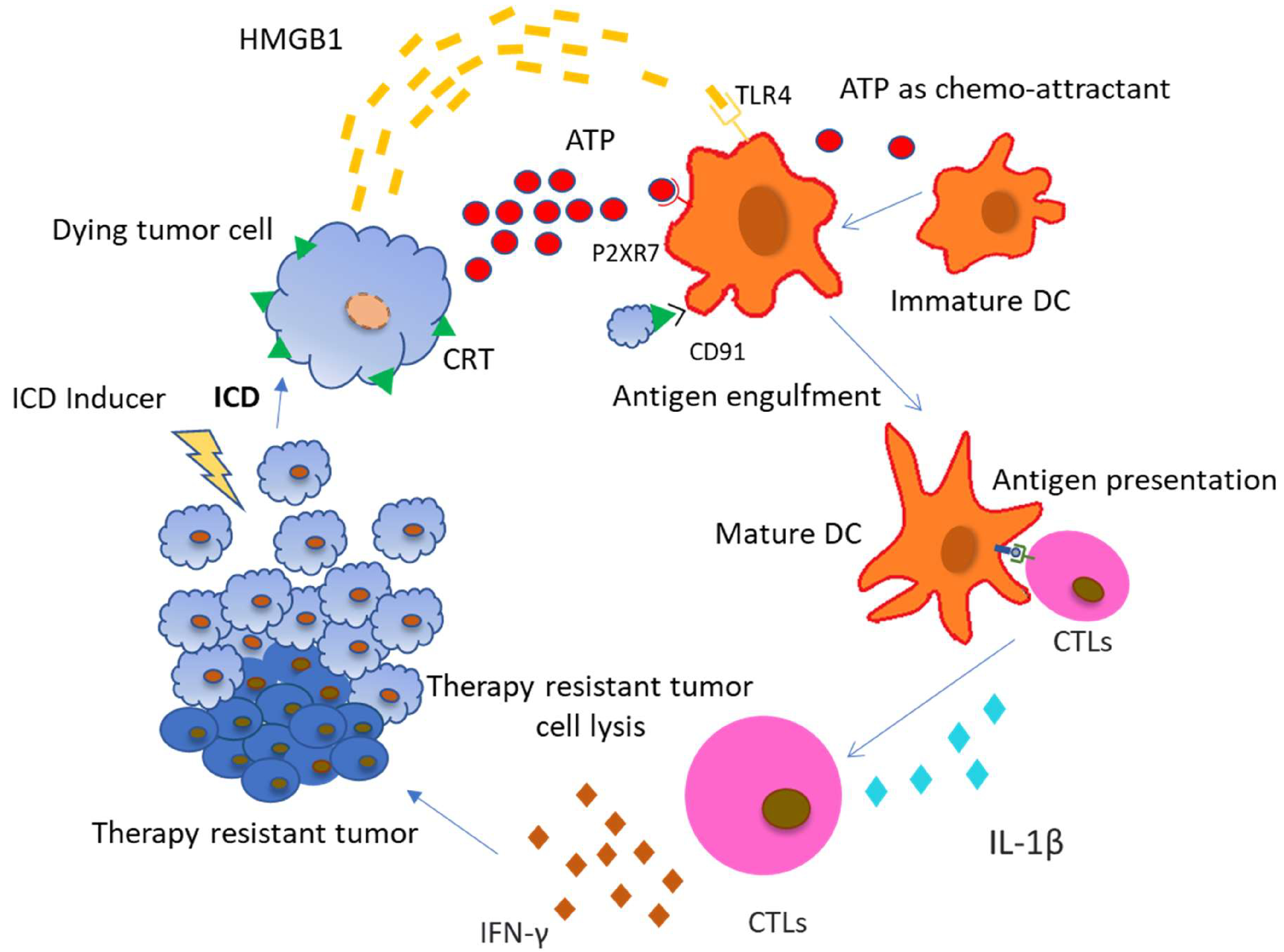Figure 1:

Chemotherapeutic drugs inducing Immunogenic Cell Death (ICD) in tumor cells mediate the release of DAMPs from the dying tumor cells. Cancer cells dying due to ICD induce CRT exposure on the outer surface of plasma membrane and secrete ATP and HMGB1. These DAMPs have respective receptors on various immune cells. Most commonly, Antigen Presenting Cells (APCs) are the ones that are first recruited to the site of ICD and pick up signals to start an immune response. They contain TLR4, P2X7R and CD91 receptors on their surface which recognise HMGB1, ATP and surface exposed CRT respectively. ATP helps in the recruitment of DC to tumor bed, CRT helps in the uptake of tumor antigens by DCs and HMGB1 helps in optimal antigen presentation to T cells. Cytotoxic T lymphocytes (CTLs) are activated by these mature DCs by antigen presentation and IL-1β secretion. CTLs produce inflammatory cytokines like IFN-γ which leads to the elimination of chemotherapy resistant tumors.
(Abbreviations: ICD: Immunogenic Cell Death; CRT: Calreticulin; ATP: Adenosine Triphosphate; HMGB1: High mobility group Box 1; APCs: Antigen Presenting Cells; TLR4- Toll-like receptor 4; IL-1β- Interleukin 1 beta; IFN-γ: Interferon-gamma; CTL: Cytotoxic T lymphocyte).
